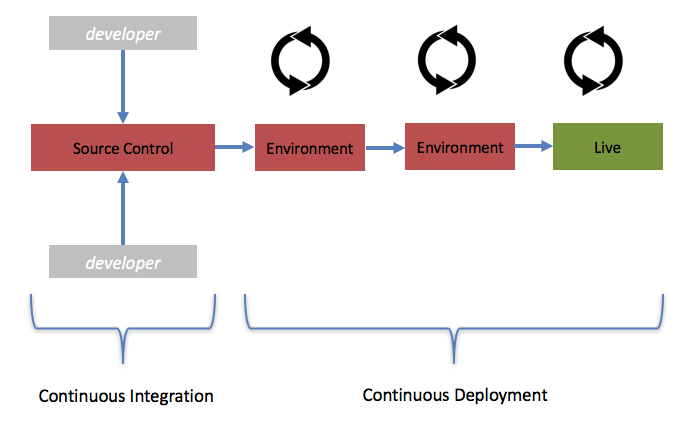Why Organizations Fail to Adopt CI and CD
Whether it's because of a lack of trust in the automation process or some major skills gaps, not all organizations are ready to adopt automation.
Join the DZone community and get the full member experience.
Join For FreePracticing DevOps, having Continuous Integration and Continuous Delivery processes, and adapting to microservices is what makes an organization a modern company have the capability to grow and emerge as a successful organization.
Continuous Integration is a process in which developers merge their code as often as possible into a centralized location. Continuous Deployment is a process in which the merged code by developers is repackaged and deployed to the target environments with the final objective of releasing it to the live environment.
A simple process is shown below:

Some benefits of proper CI and CD include:
Accelerated time to market.
Building the right high-quality product.
Improved productivity and efficiency.
Reliable releases.
Improved customer satisfaction.
The process of CI and CD looks simple, but is it really simple to practice in reality? There are some pitfalls to acknowledge by moving towards CI and CD. What are they?
1. Lack of Interest and Resistance to Change
Most the organizations are happy with how they are and don’t want to take chances and risks because of fear. However, these organizations don’t know the benefits of change and ultimately, they lose their market. Some norms should be established and followed by the management first and management should enforce changes to each team accordingly. Many organizations don’t adopt CI and CD and still practice manual processes, and they lag behind.
2. Skills Gaps
Sometimes, because of the imbalances in the knowledge and wrong selection of candidates, there can be a delay in spreading the change and adapting to this quickly. Some experienced engineers and developers are eager and very quick to grasp the new skills and knowledge required for CI and CD — but not all. Skills gaps cause huge problems. To overcome this, repetitive training is necessary.
3. Low Trust in the Automation Process
Adapting to CI and CD is all about automation. Some organizations really don’t believe in and are more skeptical about the automation process. Ultimately, they end up wasting a lot of time doing manual things and delaying their product to the market.
4. Wrong Tool Selection
Selecting the right CI and CD platform and DevOps toolset is very important. A very good analysis is necessary. You can check out my articles about the best DevOps tools and the stages of the Continuous Delivery pipeline to get some knowledge on the tools and stages. Selecting the right tools is important since developer work depends on those tools. They should be easy to use and understand.
Opinions expressed by DZone contributors are their own.

Comments